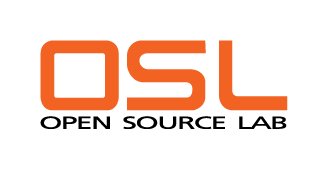|
← Revision 6 as of 2005-05-15 23:20:50
Size: 3281
Comment: fixed hr at foot (-kq)
|
← Revision 7 as of 2005-05-21 14:12:41 →
Size: 3364
Comment: direct link to an x86 netinst iso, thanks junior (-kq)
|
| Deletions are marked like this. | Additions are marked like this. |
| Line 18: | Line 18: |
| 1. Download and burn (or otherwise get a copy of) the Debian GNU/Linux 3.0 'woody' netinst disc. | 1. Download and burn (or otherwise get a copy of) the Debian GNU/Linux 3.0 'woody' netinst disc. See (for example) [http://ftp.fi.debian.org/debian-minicd/woody-i386-1.iso here]. |
Installing Debian GNU/Linux for Personal Telco use
We (the NetworkOperationsTeam) have choosen to use Debian 3.0, aka 'woody' or 'stable', as our standard Linux distribution. See DebianLinux for more information.
The general procedure for installing Debian is well-documented:
http://www.debian.org/releases/stable/i386/install
While it may seem intimidating, that guide is very complete and effective. You may find it very helpful to read over it before beginning if you have not installed a Debian system before, and to refer to it if you run into problems.
This document specifically refers to installing Debian GNU/Linux version 3.0, codename "woody", on x86 systems which are intended to be managed by the NetworkOperationsTeam. Many of these settings are not appropriate for home usage, unless one is hosting an ops-managed system.
These instructions must be followed precisely by users who are following the UsingBuilderHowTo.
Installation procedure
1. Download and burn (or otherwise get a copy of) the Debian GNU/Linux 3.0 'woody' netinst disc. See (for example) [http://ftp.fi.debian.org/debian-minicd/woody-i386-1.iso here].
2. Boot your target system using the netinst disc.
3. Install with a 2.4-series kernel by entering 'bf24' at the 'boot:' prompt.
boot: bf24
4. Follow through the questions until you see the option to partition a hard disk.
5. Recently, the most common hard drive size that we have been using is ~2GiB. This is our preferred partition layout.
~128MiB |
(hda1) primary partition 1 |
Swap |
~256MiB |
(hda2) primary partition 2 |
/ (root) |
~512MiB |
(hda5) logical partition 1 |
/usr |
~512MiB |
(hda6) logical partition 2 |
/var |
~640MiB |
(hda7) logical partition 3 |
/home |
Increasing any of these sizes is acceptable - swap, /var and /home being likely candidates - and /home may be shrunk as small as about 400MiB. ext2 and ext3 are both acceptable as filesystems.
6. Continue following through the questions. Eventually, the system will reboot. Be sure to remove the CD like it says.
7. After rebooting, the system will congratulate you and continue to ask questions.
- Enable all password options - shadow and MD5 encryption.
- Only create the root user.
DO NOT run tasksel or dselect.
- Do not configure 'exim', the mail system. (This is option #5 at one of the menus.)
- Accept the defaults for the other questions.
8. When you see a 'login:' prompt, the Debian base installation and configuration is complete.
If you're building an ops-managed node, continue following the UsingBuilderHowTo.
If you're building a non-ops-managed node, check out NewCloneArmyInstallMethodology.
Addendum
You can make a custom partition layout, but if you are following the UsingBuilderHowTo, you must reconfigure GRUB after node.sh finishes. For SCSI disks or custom / (root) or /boot partitions, please reference the GRUB install section of the builder source code or for further information on grub see the grub manual. [http://www.gnu.org/software/grub/manual/html_node/Installing-GRUB-using-grub-install.html]
Author
[CategorySoftware] [CategoryNode] [CategoryNuCab] [CategoryDocumentation] [CategoryNetwork]

